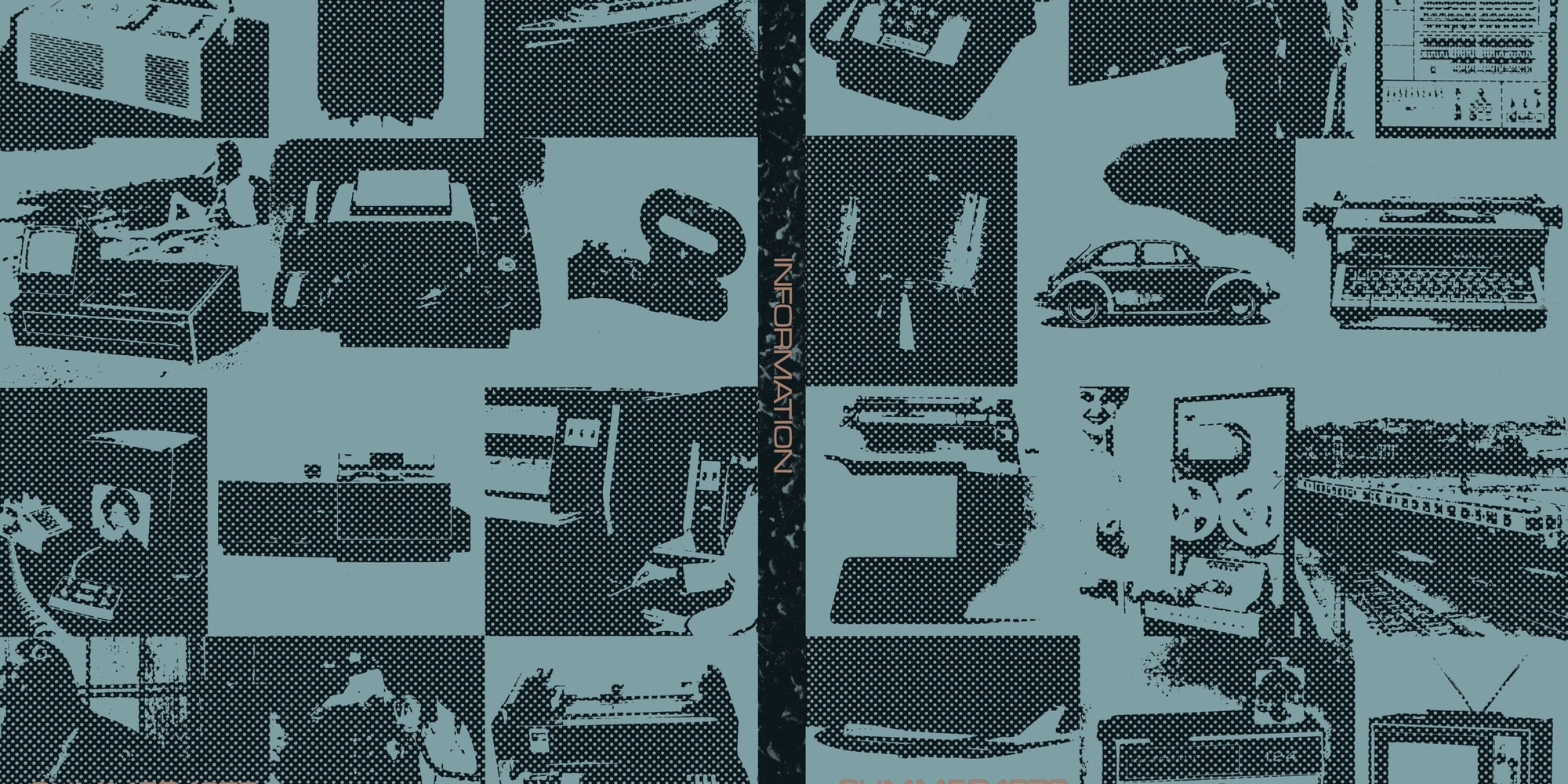
50 Years Later, a Conceptual Art Exhibition Still Courts Controversy
Lucy Lippard, Lawrence Weiner, Mel Bochner, Paola Antonelli, and the late Kynaston McShine reflect on Information, one of the most influential exhibitions of the 20th century.
While the 1970 survey Information, curated at MoMA by Kynaston McShine, came out of the social and political turmoil of its time, it feels in step with our contemporary upheavals. To coincide with the 50th anniversary of this landmark exhibition, MoMA has rereleased the much-coveted and collected out-of-print exhibition catalogue. One of the first major international surveys of Conceptual art, Information highlighted artists who pushed to the forefront work that was political, process-based, or required audience participation. Their works often challenged institutional hierarchies and used ephemeral materials, evading typical museum classifications, and ultimately transforming the way the Museum collected and presented art.
Some artists toyed with bureaucratic systems: Vito Acconci changed his address to MoMA and collected his mail there every day, while Helio Oiticica created rooms and beds for people to relax in. Others thrust the Museum into conflict: Hans Haacke’s controversial MoMA poll asked visitors if they approved of New York Governor (and former MoMA president) Nelson Rockefeller’s attitude toward the Vietnam War; and John Giorno’s Dial-a-Poem prompted FBI surveillance of the show. Hannah Darboven proposed a numerical exercise, while Adrian Piper outlined methods of categorizing artistic production.
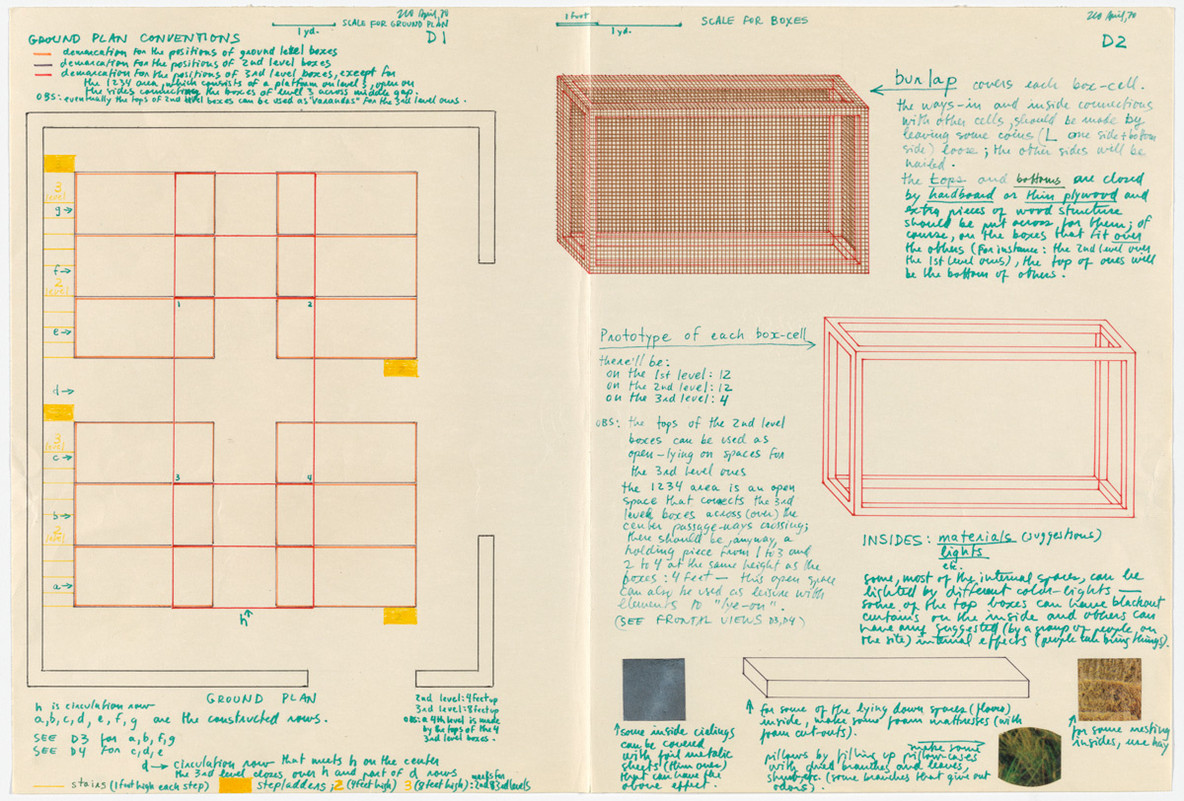
Plans for Hélio Oiticica’s Barracao Experiment 2
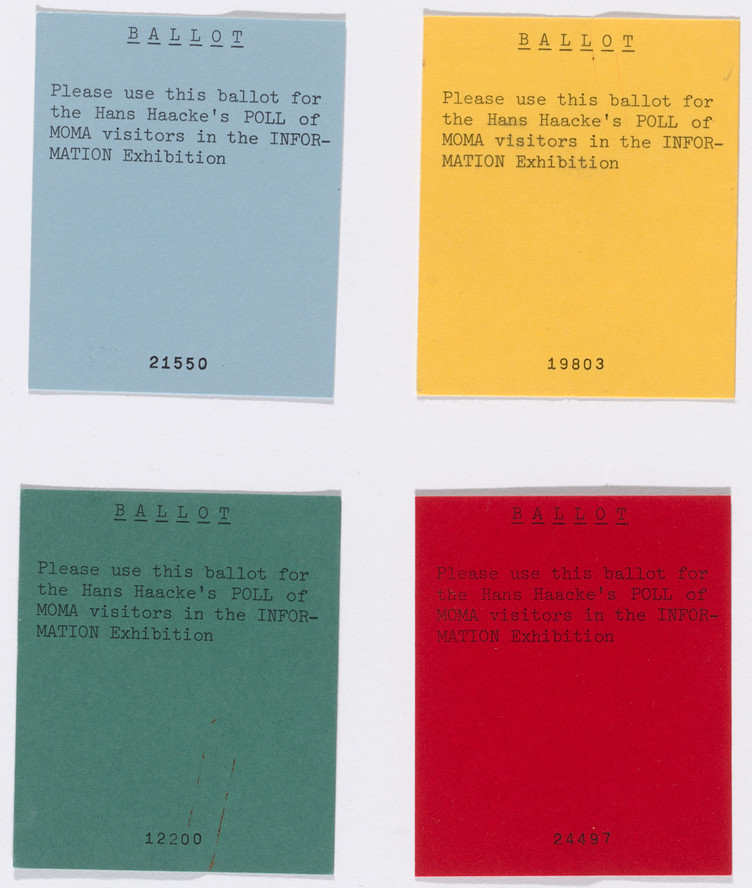
Four ballots used for Hans Haacke’s Poll of MoMA Visitors
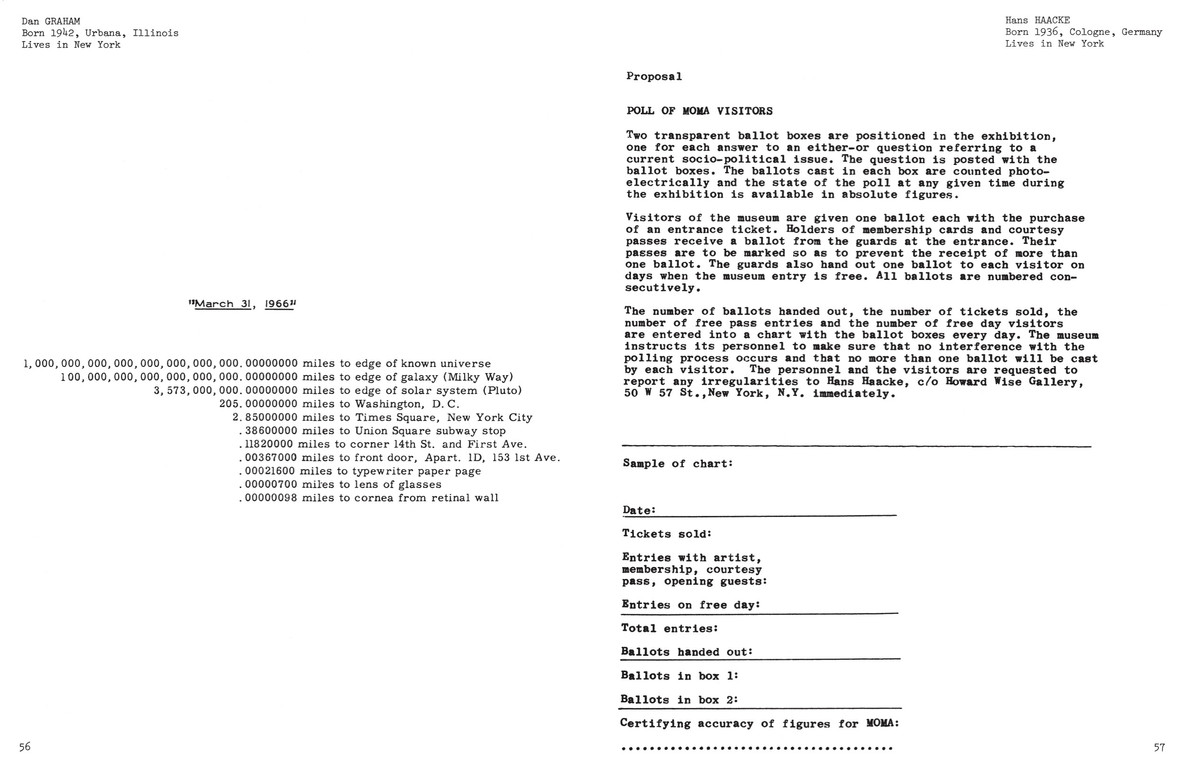
Hans Haake catalogue submission for Information
The catalogue, which McShine called an “anthology to the exhibition,” also included works that were not displayed in the galleries. McShine’s text was broad and brief, leaving room for the artists to speak for themselves without curatorial interference, reflecting the democratic ethos and self-reflexive nature of much of the work in the exhibition. To celebrate this milestone, and in the spirit of the original catalogue, we have compiled a series of reflections, including excerpts from a 2010 conversation with McShine, and contemporary responses from senior curator Paola Antonelli and some of the artists and thinkers who appeared in the original show.
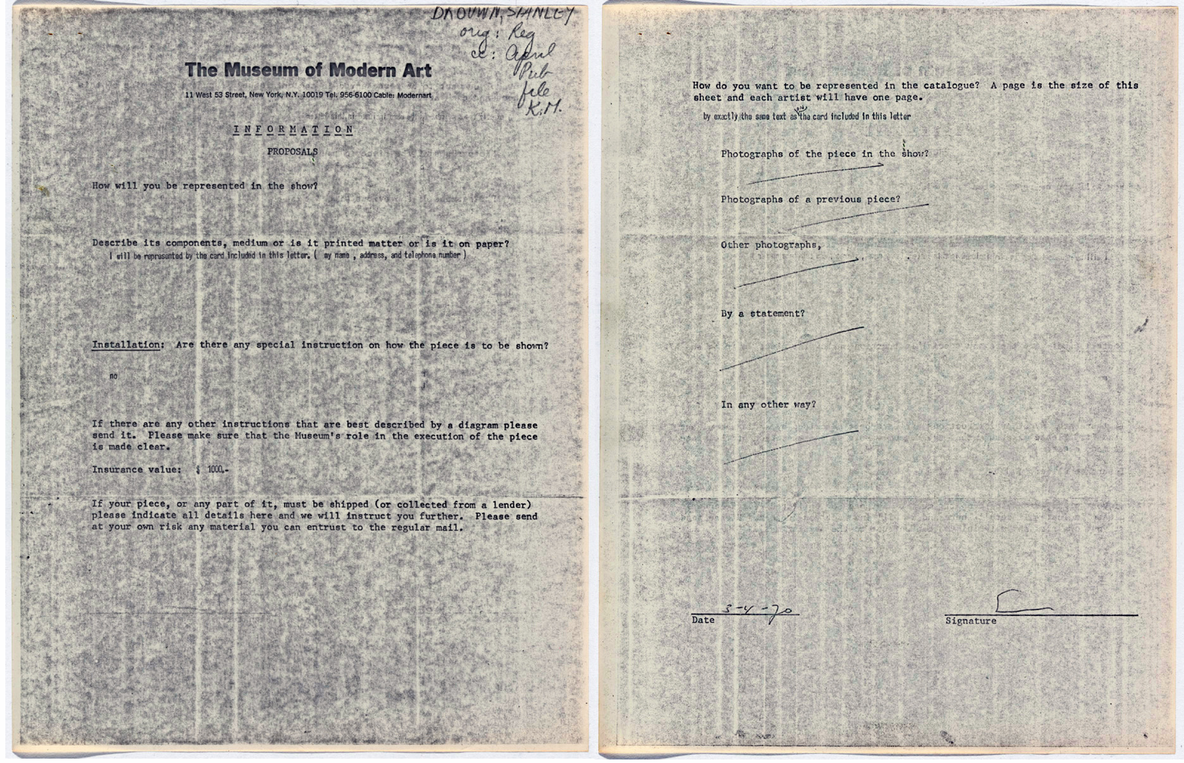
Artist questionnaire for Information
Kynaston McShine
As I’ve always said, when you’re doing exhibitions, one-man shows are supposedly love affairs; three or four are a dinner party; and then the larger shows, the group shows, are cocktail parties. In the cocktail parties you have some of those who you want, some of those who you have to tolerate, and some of those who you invite and you never will see them again. The International Survey. That was very much a cocktail party.
The reason the show was called Information was because I was given the mandate to do an international exhibition of young artists, a large group show. So I kept going to studios and not letting on that I was doing a big exhibition, and I kept saying to people, “I’m here for information.” I couldn’t figure out a title for the show, so I called it Information. It has taken on this other, completely mythical aura of being the great foresight of McShine about it being the Information Age, Marshall McLuhan, Conceptual art. Probably that was there too, in its way, a residual way.
It was a large group show, and it also was at the time of a lot of the unrest in relation to Vietnam. At that point the Museum had banners for all of the major exhibitions outside. I had these four banners which were white, and the word “peace” in Morse code running down them. I couldn’t put banners saying directly, “Peace.” It would have to be abstract.
The catalogue is kind of loose. It was very much of its time. One of the things I did in the catalogue was give each artist a page to do whatever they wanted to do. Lucy Lippard did a wonderful conceptual bibliography. I also had this sort of magazine-y thing of lots of different images without captions.
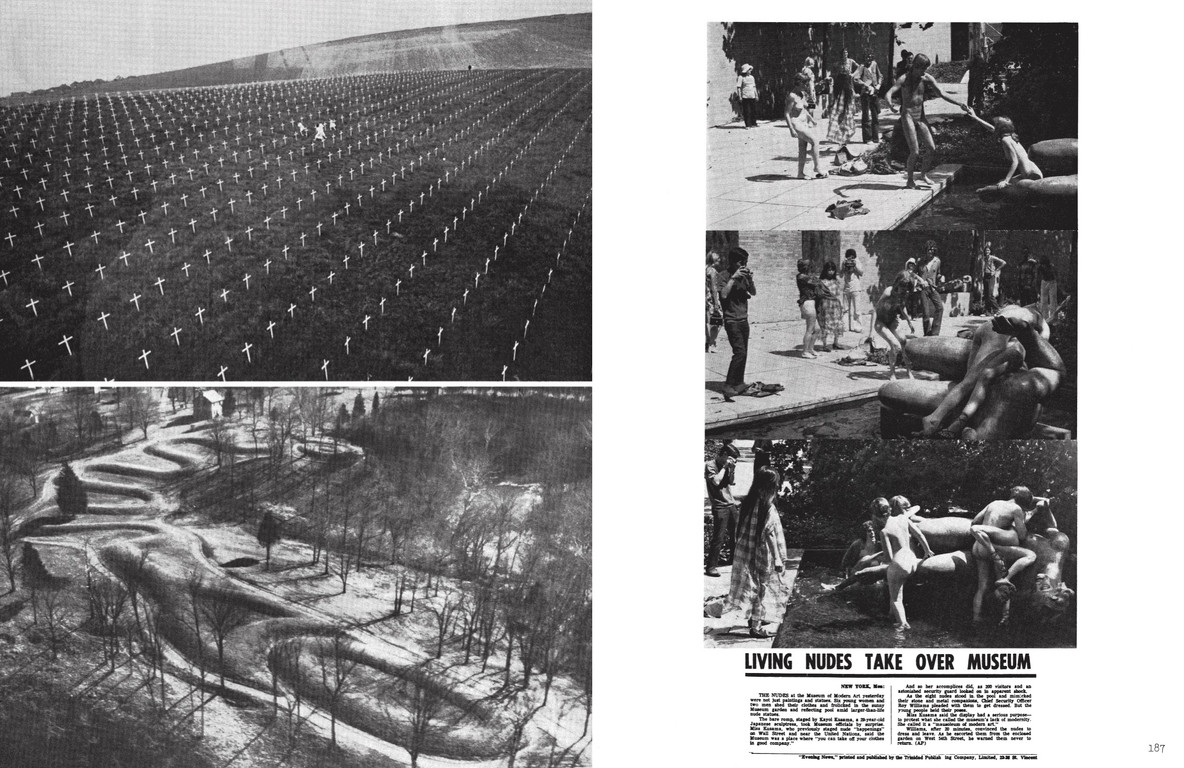
Newspaper spread for Information catalogue, featuring Yayoi Kusama’s Grand Orgy in the Garden
It really was a kind of thing about having the idea of being in favor of one’s time, which is a favorite phrase of mine, which also comes from a Frank O’Hara poem. It was acting in favor of my time, and figuring out a few things. That time was the time of the Art Workers’ Coalition and there’s a certain amount of protest by artists about the Museum, in terms of contemporary art. Then the Black community complaining that we didn’t do any show of Black artists, which was true. There was a lot of ferment in terms of contemporary artists and their feeling that The Museum of Modern Art wasn’t paying any attention to them, that the curators didn’t go to the galleries enough, and there was not enough presence of contemporary art, unless it was a large exhibition.
Information is at around that time, but other [unauthorized interventions] were happening, like Yayoi Kusama doing her bathing in the Sculpture Garden. Then an artist spilling ox blood in the lobby of the Museum, and it is all partially coming out of the anger of Vietnam, but also anger at the society and anger at the governance of museums. So there was a kind of unrest, a moment of turmoil, of ferment, in the Museum, and a lot of conversations about what to do.
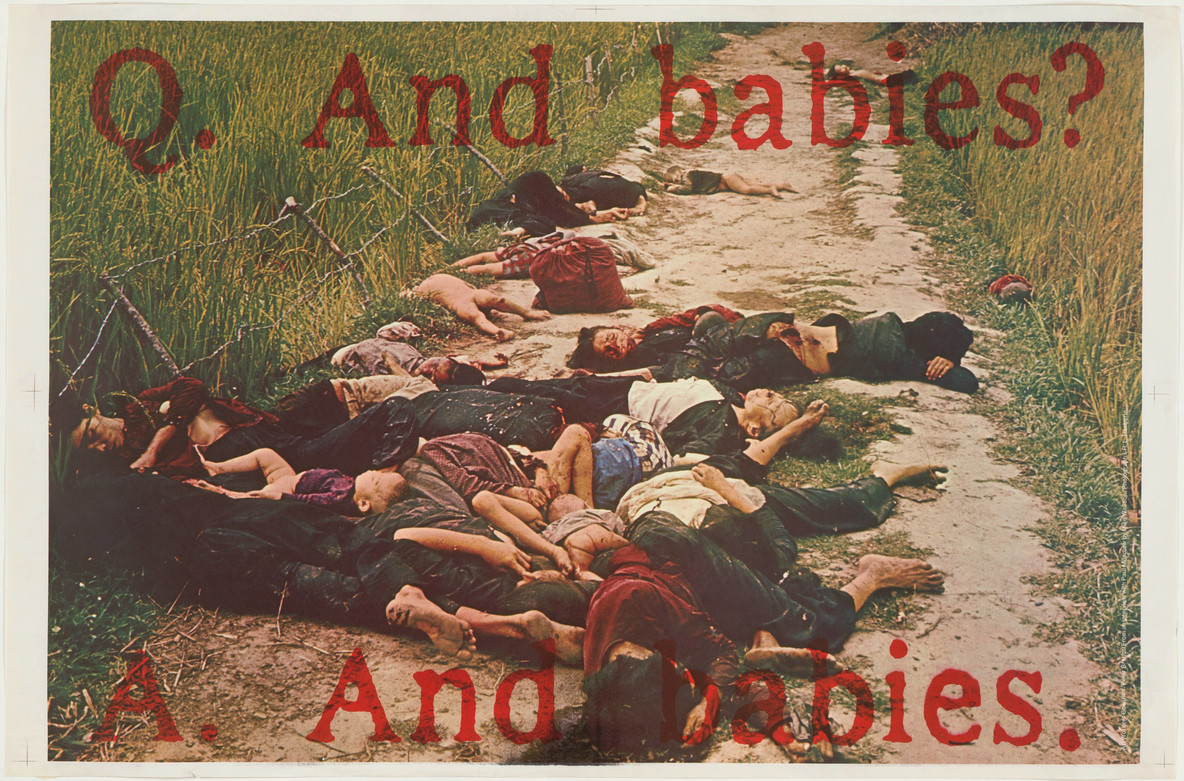
An Art Workers’ Coalition poster that was deemed too controversial to reproduce, but appeared in the catalogue
One of the things that really came out of this, and it’s really a very important part of the history of this place which is very much unknown, is that because of Barbara [Jakobson] and Carter [Burden] and Jeff and the Junior Council, they pushed that there be a museum in Harlem. And it is basically from this museum that the Studio Museum in Harlem was founded. It became a real center for African American art, and it had studios, and it became a big force. And it gave a lot of different people, not only patrons, but it gave the artists a focus, the African American artists. And I was one of the first board members. People don’t really know or realize that this really came out of The Museum of Modern Art and was part of this whole ferment of the early ’70s.
Oral History Program, interview with Kynaston McShine, 2010 and 2011. The Museum of Modern Art Archives, New York
Compiled from an oral history interview with Kynaston McShine and Carolyn Lachner at The Museum of Modern Art, spring 2010
Paola Antonelli
The role of curators that deal with contemporary art and design is to try and present the Museum as a gift to the world, a place where complex issues can be disentangled and new ebbs and flows in culture can be paused for a moment and contemplated. That’s what I felt was so important about Information: it took something that was happening in the world and congealed it into an exhibition that officially ushered in a new era in the museum world.
MoMA has power, and reach, and authority. When you do something at MoMA, the world watches. That’s the enormous luck and also fear that many of us have. Kynaston was quite fearless. He was doing what he felt was right, and for that reason, he had such impact. Whenever you do something that is different from what happened before, there will be some people that will be rocked to their core because there are deep connections that people feel to either their research area, if they are art critics, or to their familiar territory if they are museum-goers and members.
If you all of a sudden take away [Picasso’s] Demoiselles d'Avignon and instead you put up Conceptual art, the sky falls. It’s almost lovely that this happens. Information was very important for me because it made me realize that ideas that are in the air deserve to be brought down to earth and organized. That’s what curators are, they are trusted guides that are able to present concepts that might otherwise remain scattered or hidden.
Many people say that today feels a lot like the ’70s. There’s a lot to fight for and there’s a lot to fight against. There’s a lot to build and a lot to take down. Ultimately, what remains with me the most is the importance of individuals and the importance of discussion amongst colleagues and discussions that curators have with artists. So to me the figure of Kynaston is emblematic of somebody that really was thinking about the museum and art deeply, and about what the museum represented for art and art represented for the museum. I didn’t see the show. I was not in New York, I was a kid. But looking at it in hindsight, reading the catalogue, getting to know Kynaston, feeling the echo in the words of so many artists and so many critics, it really gave me a lot of courage myself.
As told to Hanna Girma at The Museum of Modern Art, fall 2019
Lucy Lippard
The Information show was a landmark not because it was the first of its kind (it wasn’t) but because it took place at MoMA and was such a drastic departure from the museum’s usual fare (Hans Haacke’s work, for example, which criticized the museum’s political connections.). Kynaston was given an extraordinarily free rein. He and I were close friends then and I had some input into the show. But I was living in Spain when I did the text and long distance was part of the point. I was already deeply embroiled in Conceptual art and the idea was that dematerialized objects made distance no problem, as in Seth Siegelaub’s world-wide show that existed primarily in the catalogue, bypassing art world institutions altogether. Today’s protests at the Whitney and MoMA and elsewhere about trustees’ suspect corporate involvements reflect the positions of the Art Workers’ Coalition, which might be considered an invisible participant in the original Information.
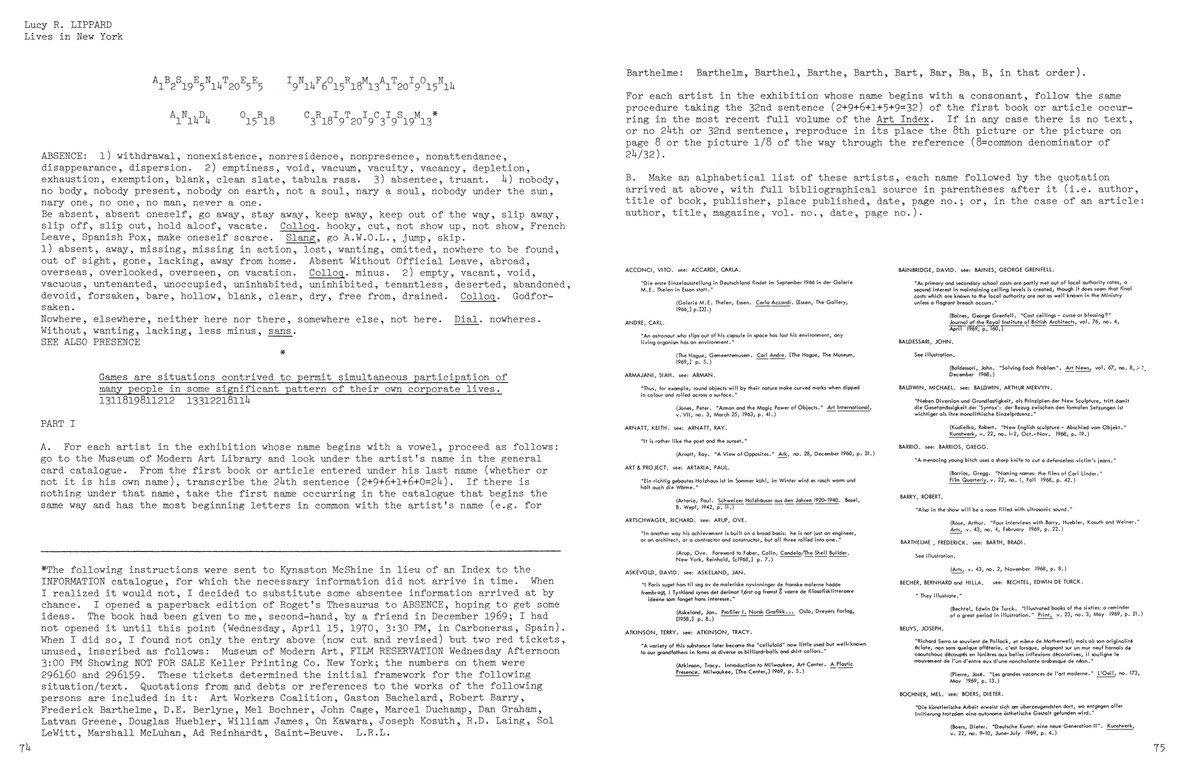
Lucy Lippard’s 1970 catalogue submission for Information
Lawrence Weiner
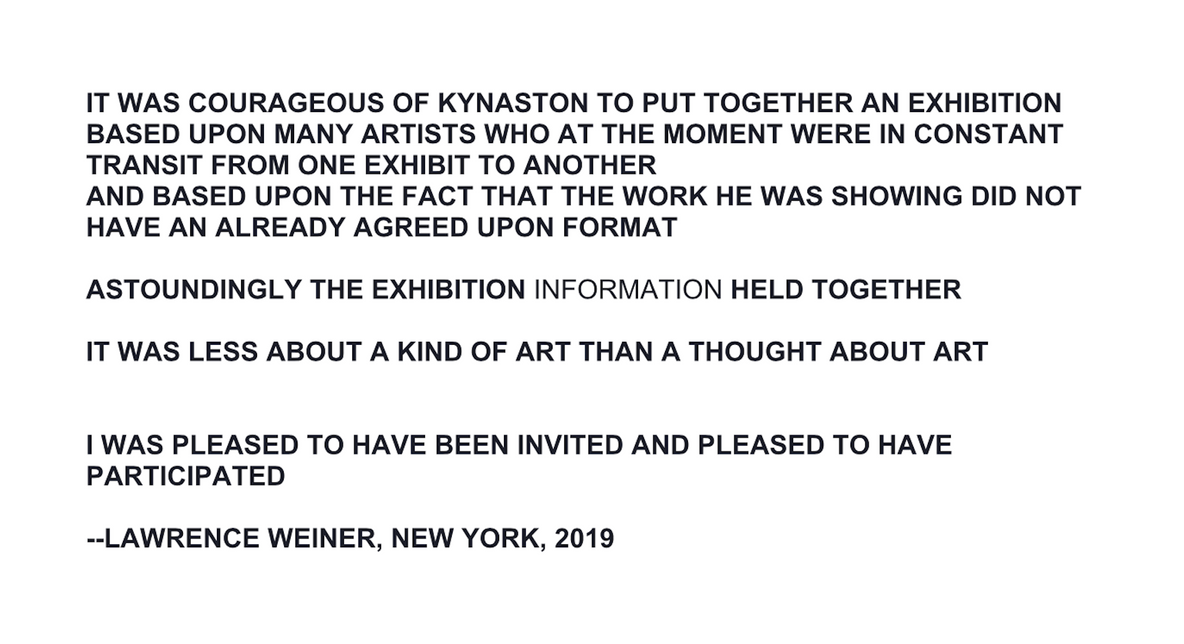
Lawrence Weiner’s 2019 reflection on Information
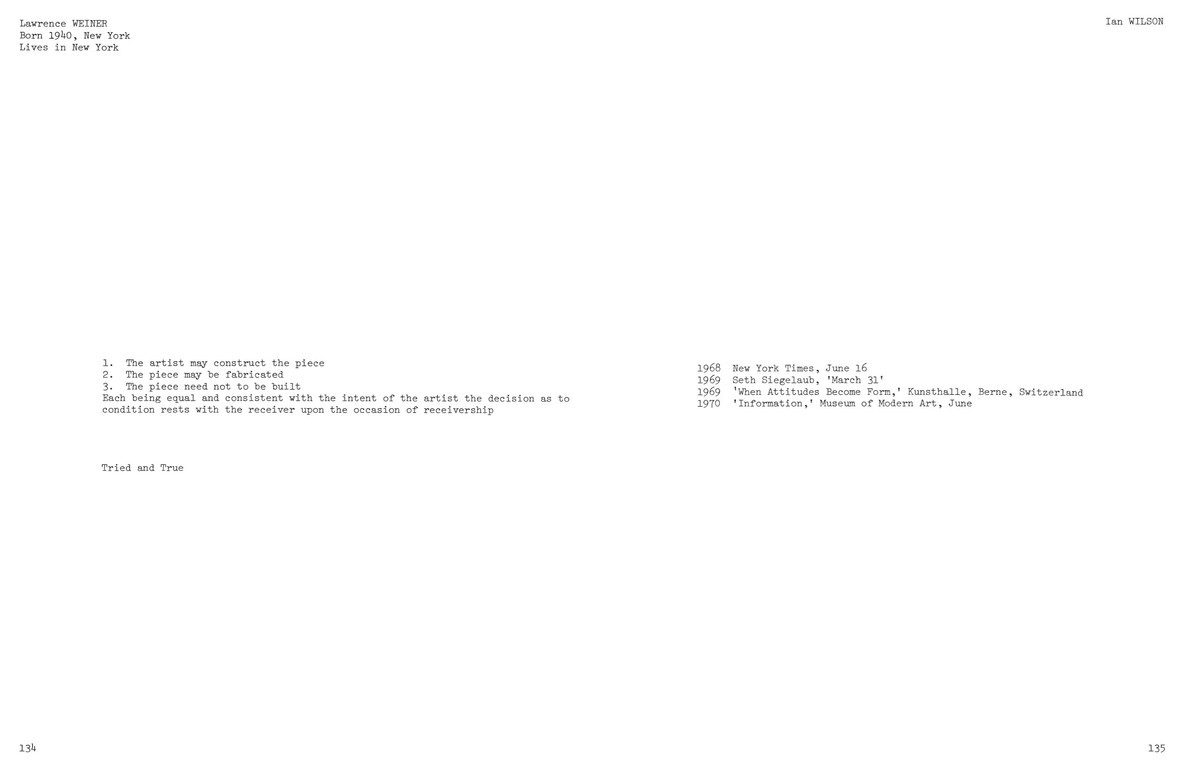
Lawrence Weiner’s 1970 catalogue submission for Information
Mel Bochner
It was a long time ago.
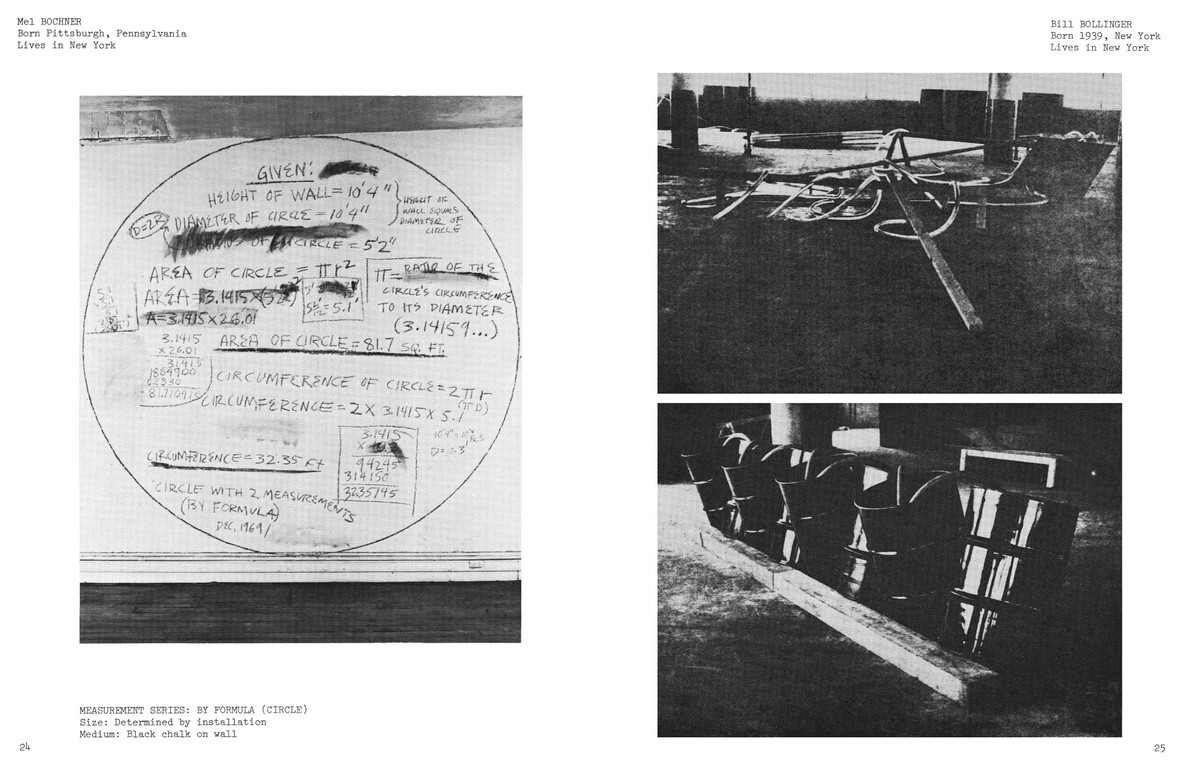
Mel Bochner’s 1970 catalogue submission for Information
Many thanks to Sofia Kofodimos, Subject Specialist and Cataloger, MoMA Archives, for her help in compiling these materials
The rereleased Information exhibition catalogue is now available in MoMA stores and online here.
Related articles
-
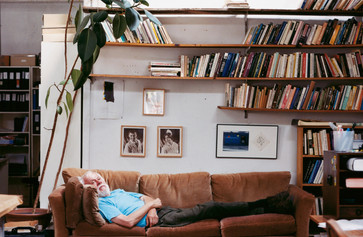
Tribute
Three Artists on the Gifts of John Baldessari, 1931–2020
An homage in three acts: Louise Lawler shares a postcard, Christopher Williams remembers Baldessari’s studio, and Stephen Prina sings one of the great Conceptualist’s paintings.
Louise Lawler, Christopher Williams, Stephen Prina
Jan 15, 2020
-
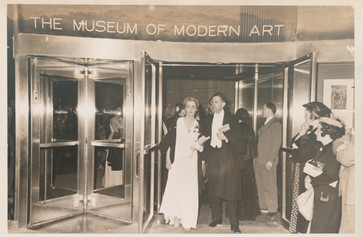
MoMA Turns 90
On the 90th anniversary of The Museum of Modern Art, we look back at how the Museum celebrated its first major milestone, in 1939.
Michelle Elligott
Nov 7, 2019

